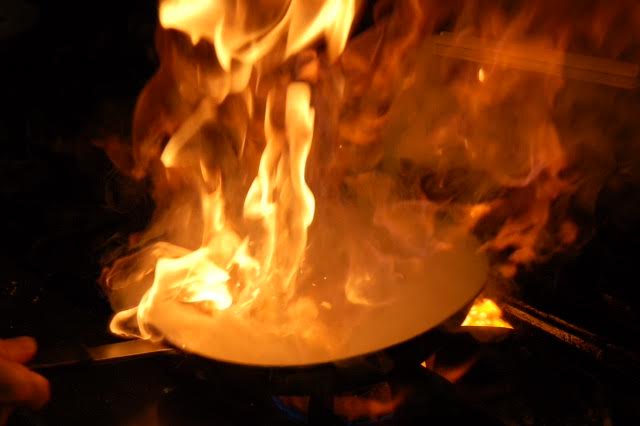Protect Your Home and Family:
Advice from the staff at Cityline Construction of Allentown
LEHIGH VALLEY, PA – Recent news here in the Lehigh Valley has included a number of home and business fires. Its been cold and blustery the first two months of 2016, and statistically, wintery temps translates to the highest statistics for a home fire.
Whether snow bound or simply nesting inside, a chill outside means people are far more likely to be inside trying a new recipe on the stove or lighting up that old fireplace in the family room
Particularly alarming about home fires is that from the moment a fire starts to the point where the structure is fully engulfed in flames can be as little as two minutes, according to The National Fire Protection Association (NFPA)
Even if your family is comprised of talented sprinters, it is imperative to plan and practice an evacuation plan with two different exit routes. The goal in a home fire is to get out of the home as quickly as possible. Never attempt to put out a large fire yourself.
In all, more than 360,000 home structure fires occur each year resulting in about $6-8 billion dollars in damage, according to the NFPA.
Five of the Most Preventable Winter Time Home Fire Causes
- Candles: Adore the romantic flicker of a warm candle light amidst a cold wintery scene? We all do. However, do beware that something as simple as knocking a candle over with a bump from a table or a pet brushing against flame is enough to spark a fire.
Candle Safety:
Use flashlights and battery-powered lighting during a power outage.
Never use candles during an emergency.
Always extinguish all candles before leaving a room or going to sleep.
Keep candles at least 12 inches away from anything flammable.
Check out the new flameless battery operated candles that look and smell like real.
Keep your hair and any loose clothing away from the flame.
Never burn a candle down to the wick — always put it out before it gets too close to the holder or container.
Never use a candle if oxygen is in use in the home.
- Alternative Heating Sources:
Even the most modern home or office environment may require an alternative heating source in certain rooms or “zones.” Whether you use a space heater for energy efficiency or for that family member who always seems to have a chill, using an alternative heat source in the home is a noted a cause of home fires.
Heater and Fireplace Safety:
Use only heating appliances with emergency shut-off features.
Keep all heating sources at least three feet feet from all flammable items, i.e., paper, clothing, bedding, curtains or rugs.
Always turn off portable space heaters in unattended rooms.
Don’t leave portable heaters and fireplaces unattended.
Ensure all embers in the fireplace are extinguished before going to bed or leaving the home.
Place space heaters on a level, hard and nonflammable surface (such as ceramic tile floor), not on rugs or carpets or near bedding or drapes.
Never use a cooking range or oven to heat your home.
Make sure your fireplace is up to date, the flue is maintained, and has a glass or metal fire screen large enough to catch sparks and rolling logs.
- Electrical/Appliance Malfunctions: Electrical fires can have a number of different origins. They can be caused by an equipment malfunction, from an overloaded circuit or extension cord, or from an overheated light bulb, space heater, washer, dryer or other appliance. Faulty wiring accounts for sixty-three percent of the fires reported that involved electrical distribution from washers and dryers, or a malfunctioning deep fat fryer. Appliance malfunctions are another leading cause of home fires. or lighting equipment.
Electrical/Appliance Safety:
Don’t overload outlets or electrical cords.
Make sure you have the right cord for the job – inside cords for inside, heavy duty/outside cords for outdoor use.
Don’t leave halogen lights on overnight or when not at home.
Consider having an electrician perform an annual checkup of your home’s wiring.
- Cooking: From oil in a pan that flares up to an unattended pot on the stove, kitchen fires account for the majority of fires in the home. Unattended cooking is the leading factor in home cooking fires. Additionally, the ignition of food or other cooking materials. More than half of reported non-fatal home cooking fire injuries occurred when the victims tried to fight the fire themselves. Ignited clothing accounts for eighteen percent of the cooking fire deaths. Ranges or cooktops account for the majority of home cooking fire incidents with
Cooking Safety:
Be particularly alert when frying foods. Frying posing the greatest risk of fire.
Wear only close fitting clothes in the kitchen.
Children and the elderly need to be supervised when cooking on the stove.
Never leave the kitchen when a pot or pan is on the stove.
Use a slow cooker if you know need to leave home for work or errands.
- Christmas Trees – Christmas trees fires are more likely to be serious because of the factors that can contribute to the fire: a dry tree, electrical lights and a fuel supply such as gifts under the tree or a nearby sofa. Christmas tree fires cause an average of $18.3 million in property damage each year.
Christmas Safety:
Keep live trees well watered and dispose of properly before they become dry.
If you are reading this post in mid-January and your tree is still up, we urge you to place the tree in your yard for use as a wildlife and bird feeder.
Always check lights for any shorts or other electrical issues before putting them on the tree.
Never place a tree too close to a heat source like a fireplace or wood stove, or being too close to candles.
Turn off tree lights before leaving the house or going to bed.
Cityline Construction of Allentown specializes in restoration, emergency and disaster services for businesses, institutions and homeowners. For more information about Cityline, visit www.citylineconstruction.com or call 610-820-5555. Follow Cityline Construction on Facebook, on Twitter and Instagram.

